

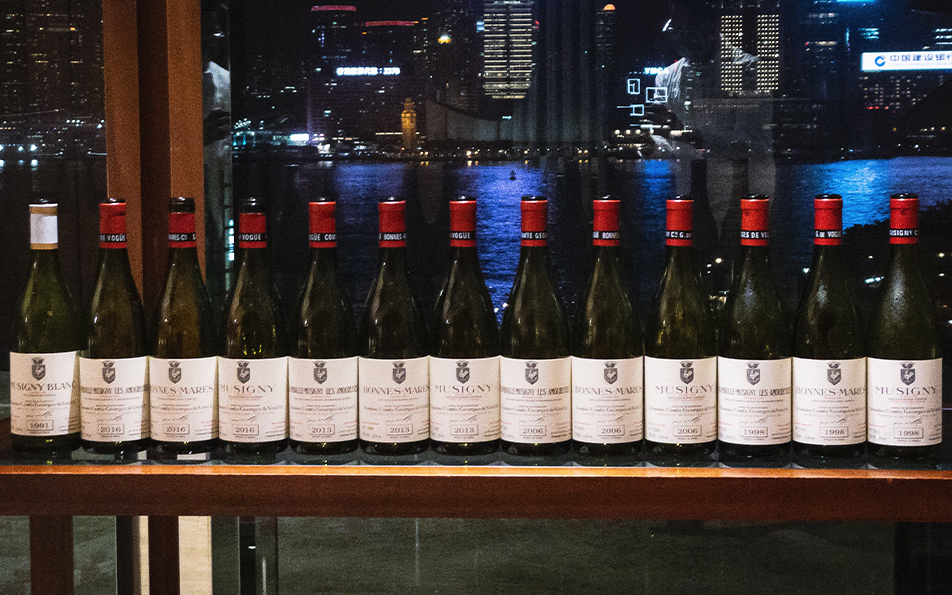
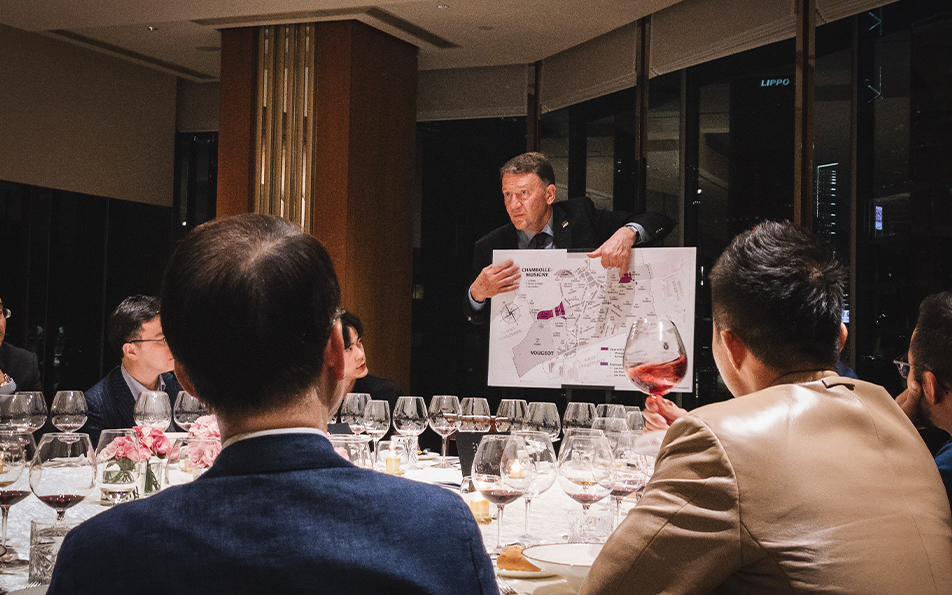
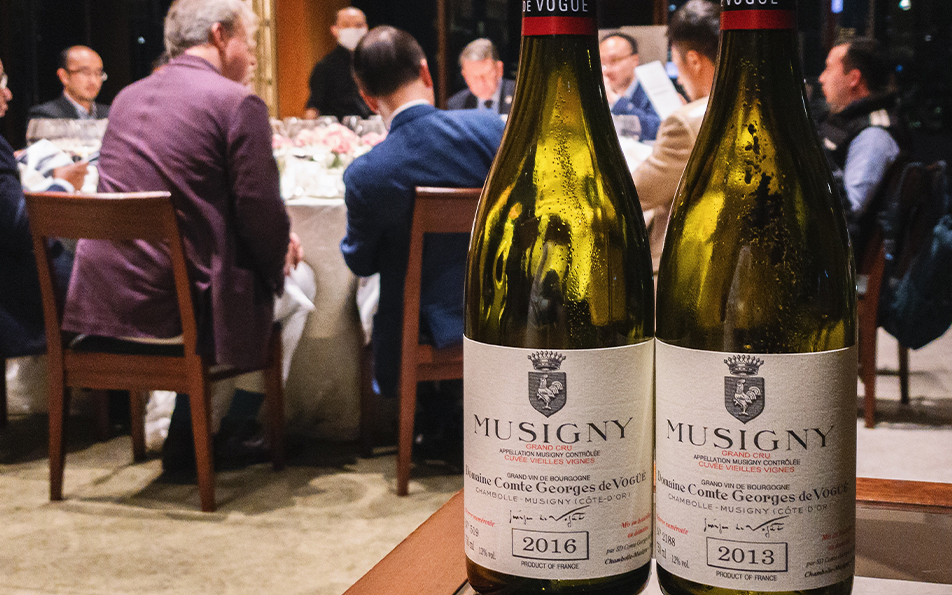
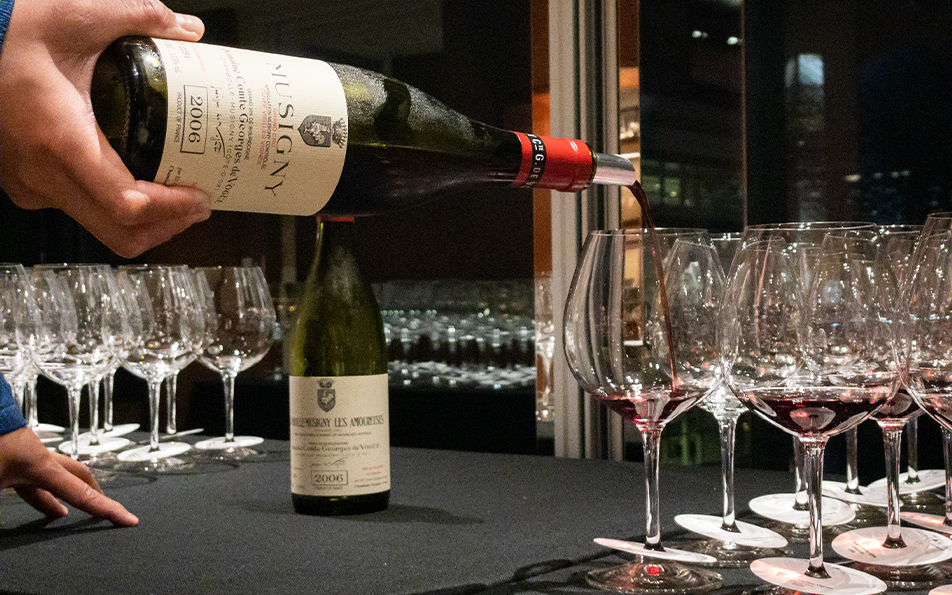
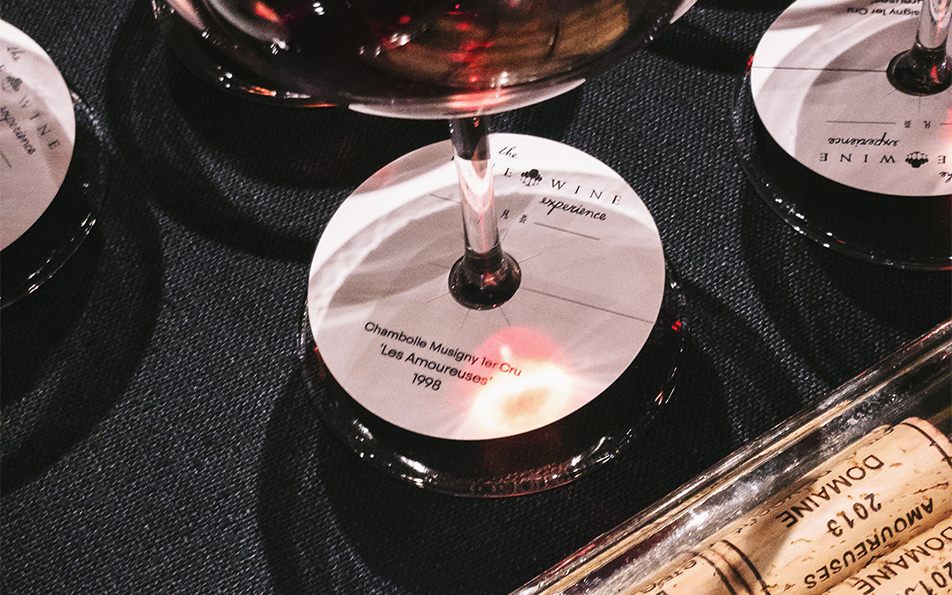
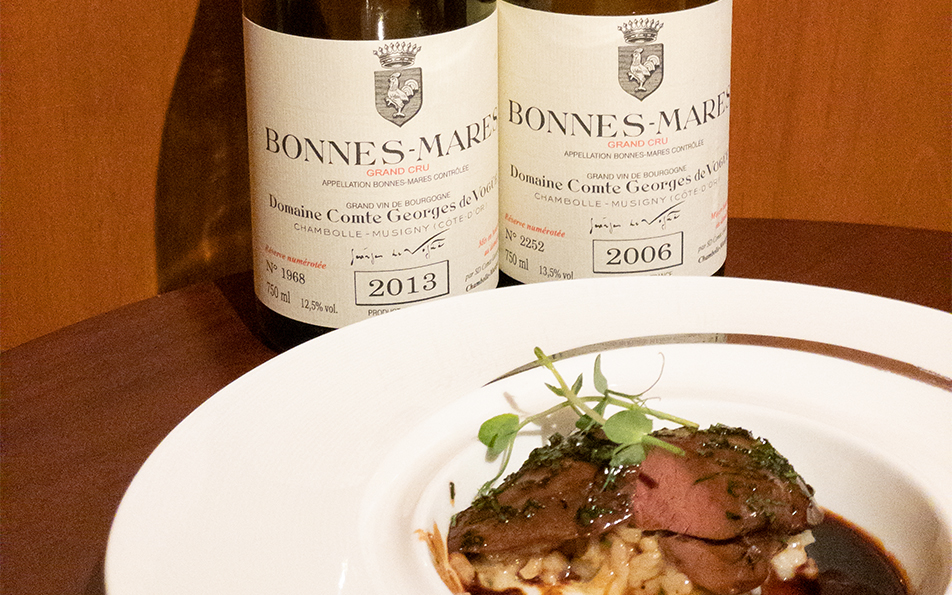
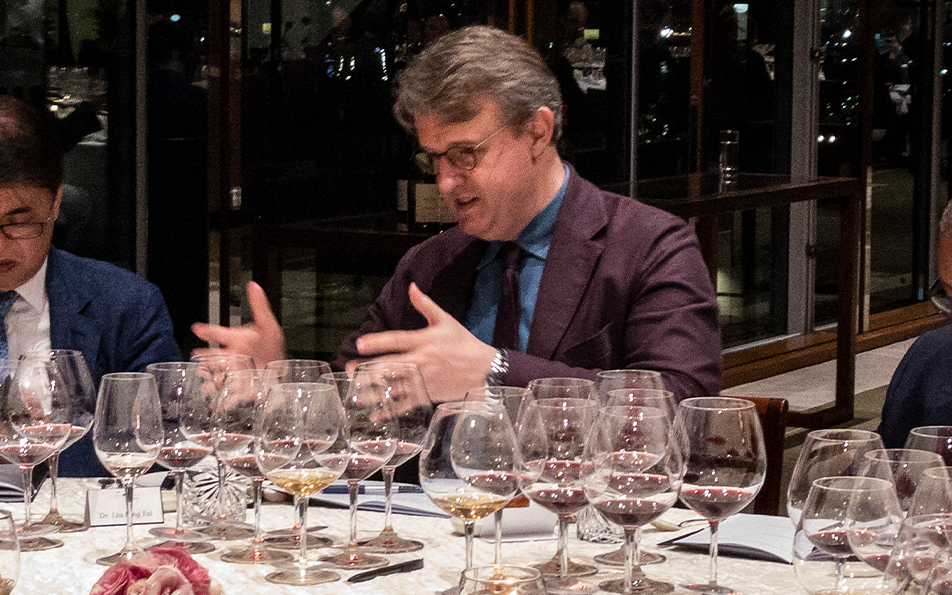
Four elements make a wine – the terroir (base rock, soil, slope, micro-climate combination of the vineyard), the genetic material (old v young vines, grape variety, etc), the humans (grape growing, harvesting, winemaking, ageing and bottling), and the vintage (the weather those 12 months preceding harvest, plus some of what came before).
The desire to experience “the best” (and perhaps some FOMO) drives us to want to experience the peak possible combinations of these four elements in one glass of wine. I mean, why not?!!
But to rinse and repeat, we miss out on much that wine, even fine wine, has to offer. This is partly to do with the hedonic treadmill: if all we seek is the best, and the best is always what we attain, we adapt, it becomes normal, it no longer excites, everything ‘below’ it disappoints, and ‘the best’ itself can even become boring. It also only reveals in the first place what things taste like when everything goes well – and for that we have beverages made in factories.
The best fine wine experiences often come when we are learning something. Of those four variables, for me the most interesting one to explore is vintage. When you have great (or even good) terroir, suitable genetic material, and – critically – really top class human effort – then vintages are like the plot-twist chapters of a favourite book. You don’t want to skim. You want to go deeper! In fact, just like the narrative’s drama becomes most interesting when our protagonist faces adversity, challenging vintages reveal a lot about the character of a wine that is not revealed in plain-sailing ‘great’ years. We now know this wine more, we are more invested in it.
I’m not suggesting randomness here with vintages. We all want to try the ‘great years’, we have our wine bucket lists. I’m also not suggesting we drink bad wine. But when you find a wine you like, or want to understand a terroir better, the vintages provide the layers to understanding, and that understanding expands our pleasure.
At The Fine Wine Experience Burghound Symposium dinner devoted to three terroirs exploited by Domaine Comte Georges de Vogüé in March, we tasted Musigny, Bonnes-Mares, and Les Amoureuses side by side in each of four vintages. Each of the vintages Jean-Luc Pepin chose to share had presented quite some challenges to the domaine, and so each one revealed different aspects of the terroirs, and the painstaking work the domaine conducts to respond to the drama of the year. This is faith in the strength of the terroirs, in the work done, and in what can be revealed. It was a smart selection, and this turned out to be a real favourite of the many Vogüé events I’ve had the privilege to be a part of.
‘One of the finest and most ancient domaines in Burgundy, emblematic of the noble finesse of Chambolle-Musigny, the Domaine is the largest owner of Musigny Grand Cru’, as I have written before. The domaine traces its family lineage back to the 15th century under the same family, today owned by the Comte Georges de Vogüé’s granddaughters. It is run by three directors – François Millet, who joined in 1986 – who made all of the wines in this tasting – and retired in 2021 (the role now taken by Jean Lupatelli); Jean-Luc Pépin who joined in 1988 and directs the commercial operations; and viticulturalist Eric Bourgogne, who joined in 1996.
The Fine Wine Experience is proud to represent the domaine as its exclusive agents for Hong Kong and mainland China markets.
We began the dinner with a rare glass of 1991 Musigny Blanc, an interesting wine for its expression and quality, the rare chance to try the domaine’s scarcest wine, and in what it reveals about the personality of the domaine. Most Burgundy critics and enthusiasts would rank Musigny amongst the top four or so red wine vineyards of the Côte d’Or. Vogüé have for generations made a white here too. The tradition is old enough that when the AOC for Musigny was created in the 1930s, the white was included in the grand cru status conveyed. When it came time to replace the vines (planted 1946, 1947), the last vintage was made in 1993.
The tradition from the mid-1990s for the Musigny red was to declassify wine from vines younger than 25 years old down one step to Chambolle-Musigny 1er Cru. But Chambolle 1er Cru – nor indeed Chambolle village – did not exist in the AOC for whites. Why create rules for wines that don’t exist? For the white produced from 1994 to 2014 (beginning with new plots in Musigny’s climat Petits Musigny planted ’86, ’87, ‘91, and followed by the replanted old plot on sandstone-limestone at the top corner of Les Musigny), they declassified the label to the next level available… Bourgogne Blanc. Since the 2015 vintage, the vines deemed by the domaine suitably old enough for the appellation (the appellation rules never prohibited the domaine from using Musigny Grand Cru on the label), ‘Musigny Blanc Grand Cru’ is back. In those now long gone ’46 and ’47 plots there was a little Pinot Blanc included – today’s plots are 100% Chardonnay. The 1991 then is a real time capsule.
1991 Musigny Blanc Grand Cru, Domaine Comte Georges de Vogüé
Bright old gold, and limpid in the glass; a sweet and complex aroma, ripe, a little waxy and earthy in tone, mature and expressive, the ripeness of quince; sweet and gently melting on the palate, grand, with fine concentration, real presence and length. 95
Production today from 0.66ha is around 2000 bottles a year, but can easily dip to as low as 900. Back in 1991, there was just 0.20ha planted for white.
Jean-Luc Pépin: “In 1991 we had a bad frost on 22nd April that particularly affected the white. On 22nd August we had hail damage and lost a lot. The challenge was to remove the smashed berries. We picked all that was good with tweezers. It was a low yield, with a lot of concentration.”
The original intent of the dinner was to highlight differences in terroirs by showing them side by side in the context of different vintages. The dinner achieved that. In brief, Musigny and Amoureuses are closely related. Musigny is likened to the ‘queen’ of Burgundy (Chambertin the ‘king’). It has both depth and breadth, sumptuousness, and mineral backbone, and alluring perfume. Bonnes-Mares is a softer, easier, plusher and most often friendlier wine. Jean-Luc Pépin: “Bonnes-Mares has more clay than limestone, while Musigny has more limestone than clay.” Vogüe’s main plot is at the southwestern corner of the vineyard, almost entirely on terres rouges (body, fullness, power), rather than the vineyard’s terres blanches (refinement, structure, minerality). For me, the easiest way to understand the place of Amoureuses is to draw a line from the style of Bonnes-Mares toward Musigny… and then keep going. It’s less ample than Musigny, emphasising mineral fineness and delicacy. It doesn’t have Musigny’s power, but it has the fragrance and allure. Jean-Luc Pépin: “It’s almost pure limestone. It can make a moody wine, but very great, with silkiness and purity. François Millet calls it ‘The First Lady of Chambolle-Musigny’.” I sits in the very opposite corner to the domaine’s Bonnes-Mares. Do my tasting notes this evening support this?
Let’s look at that in the context of each vintage.
Jean-Luc Pépin: “2016 was challenging in Chambolle-Musigny. The evening of 26-27 April 2016 there was a bad frost, the soil was humid and there was no wind, dew covered the buds creating ice, and in the clear sunlight this acted like a magnifying glass, burning the buds. We lost 60% of the Musigny. We had tiny yields but in a classically-styled vintage.”
2016 Chambolle-Musigny 1er Cru ‘Les Amoureuses’, Domaine Comte Georges de Vogüé
Fine-hued fresh ruby, still with some blue in the tone, a fairly deep colour; vibrant, fresh and sweet-fruited, a hint of brett, some florals; the palate is bright, lively, high energy, red fruit, some roses, a little touch of brett, this is elegant, fine-boned in texture with evident minerality. With further time in the glass, it became more and more floral on the nose, really lovely, and with a juicy palate expression, fine-bound energy, and just a whiff of brett. 93
2016 Bonnes-Mares Grand Cru, Domaine Comte Georges de Vogüé
Fine, mid-hued ruby; a sweet, melting, succulent aroma, forest berries, more exuberant than the Amoureuses; forest berries on the palate, softer, more lush and sherbety in taste and feel, more melting, this is bright, more seductive, really pristine and attractive, with a lovely sense of freshness and vibrancy. 94
2016 Musigny Grand Cru, Domaine Comte Georges de Vogüé
Bright fresh ruby, a touch of blue in the tone at the rim; this is quieter, more closed in, fine and fresh on the nose; the palate is jewel-like, pure fruit, shining, and high in energy, there’s great purity, a fine and distinct minerality that really stands out after the Bonnes Mares. This is a very complete and beautiful wine, very three-dimensional, the gentle nature of the grip and overall texture belies the real concentration here. It’s just so pristine. 96
I found that the 2016s had a more generous and more aromatic profile compared to the 2013s which, though not ‘green’ were elegant, pure and cool in expression. The ‘13s are more in the ‘mossy’ direction, a welcome fragrant note.
Jean-Luc Pépin: “In 2013 the Spring was very cold right into May, flowering began mid-June and by the end of June we had coulure / shot berries. We began to pick on 5th October, and harvest lasted about 8 days. It was difficult. The summer had been gorgeous, but it could not ‘catch up’ the late season entirely. Sorting at harvest was very important – there was no rot, but because of coulure there were unripe berries and these all had to be elimitated out. They did an impeccable job with this. The final result was a small yield, a year winemaker François Millet called a “rebel vintage”.”
2013 Chambolle-Musigny 1er Cru ‘Les Amoureuses’, Domaine Comte Georges de Vogüé
Clear bright ruby; fresh, very pretty aroma, cool and floral, very bright; bright on the palate too, fresh, cool, very defined by a precise mineral frame, elegant, delicate with good depth and fine expression. This is very pretty, with good tensile depth. Refined tight frame. A real mineral dimension, and super elegance. Beautiful wine. 93
2013 Bonnes-Mares Grand Cru, Domaine Comte Georges de Vogüé
Clear ruby; fresh compote of fresh forest berries, some blackcurrant, spices, a detailed nose; fresh, lush, some fine tannin offers gentle grip. This is very straight, cool, very pure and fresh, it clear and open, not especially nuanced. 91
2013 Musigny Grand Cru, Domaine Comte Georges de Vogüé
Fine clear fresh ruby; lovely fruit, freshness and complexity, beautiful fruit on the nose; very fine, crystalline and fine-boned, succulent with pure fruit, gently grippy, pure and lovely. 93
Jean-Luc Pépin: “2006 was just the opposite of 2013, but it was also a challenging vintage. Flowering had been wonderful, but from mid-June it was very hot and it reminded us of 2003. This was a heatwave that started later than in 2003, but which went into mid-July. We worried we had another 2003 to deal with. But then by the end of July and beginning of August the weather changed dramatically, and it was very cold. In fact there was snow in the alps – in August! It was an extraordinary switch in weather, but a good thing as the cooler weather calmed things down, and gave the wines freshness, which was necessary. It is a luscious vintage.”
2006 Chambolle-Musigny 1er Cru ‘Les Amoureuses’, Domaine Comte Georges de Vogüé
Fine bright garnet, showing some maturity at the edge of the rim; fresh, slightly leafy nose, cool, some leather notes; lush fruit, the flavour development is less complex compared with 2016 and 2013, this is showing some cellar evolution now, red fruit profile, a little coarser in texture, not quite the length either. With another hour in the glass, a lovely fragrance emerging now, spices, floral notes, a little barrel toastiness; the palate evening out to something more supple, refine,d elegant, some ginger-oak spice notes. Very nice. It took a long time to get going – it really needs air. 90
2006 Bonnes-Mares Grand Cru, Domaine Comte Georges de Vogüé
Fine light garnet, mature edge to the rim; fresh, slightly exotic aroma, spicier profile, sweet and fresh, with some exuberance; a nice attack of red fruit on the palate, some floral elements, a subtle twist of spice, fine tannins, this has a more easy freshness and refreshing expression after the tight-lipped Amoureuses, it is more supple and round. A lovely floral side emerged which makes this the most appealing and seductive of the three. 92
2006 Musigny Grand Cru, Domaine Comte Georges de Vogüé
Fine mid garnet, clear, a touch of evolution in the rim; a lovely clear pure nose, red fruit, some florals, a cool slightly spicy nose; taut, this bottle slightly awkward and angular, yet pure, elegant, with good length. 89
Right now I’m not finding so much pleasure in 2006. There is a strictness to the textures – it’s not a friendly vintage to dive into today, but further cellaring may resolve this. But the interesting thing for me is that Bonnes-Mares came out easily in front, that relative friendliness its trump card in ’06.
Jean-Luc Pépin: “In 1998 there was a Spring frost around the beginning of April – the first half anyway. Then in August there was a loss of humidity, a real sunburn problem, when the grapes were really grilled. The challenge of this in August was the “Aoûtiens” – many French people are away on vacation! But we managed to hire people, and we picked off the sunburned berries one by one. This work – and its timing – was critical. It had to be done well before the harvest when you could really see the grilled berries and eliminate them, allowing only the healthy ones to ripen. It was a challenge, but it made the difference. Then the first week in September had unpleasant weather. Some picked too soon. Then there was good weather and we could pick the ripe, healthy grapes.”
1998 Chambolle-Musigny 1er Cru ‘Les Amoureuses’, Domaine Comte Georges de Vogüé
Bright ruby – a lovely fine colour, bright and clear; fine, spicy, leathery, a brooding nose at first; concentrated on the palate, spicy, real depth, a compact and tannic yet ripe flavour. This has super concentration. It yielding slowly in the glass to reveal a fine, tannic yet melting texture – the skin-juice ratio feels small, with tiny berry intensity. 93
1998 Bonnes-Mares Grand Cru, Domaine Comte Georges de Vogüé
Fine garnet; a lively, spicy, wild sort of nose; intensely spicy on the palate, a very full taste with sweet concentration, small berry intensity, a little dryness at first compared to the more svelte Musigny, giving this a more burly feel. But the flavour is so pure and so good. Solid, square Bonnes-Mares. But, having concluded that this was a creditable 1998, it changed gear – fully an hour in the glass later – to something very serious, dense, sweet and balanced. It really transformed in its second hour in the glass. Lovely wine. 95
1998 Musigny Grand Cru, Domaine Comte Georges de Vogüé
Fine garnet, clear; a really complex nose, brooding, sweet, savoury with sous bois notes, it is really scented and appealing; concentrated on the palate, layered fruit, an almost jellied concentration, intense and melting, some medicinal spicy complexity – in fact it bears a resemblance to a Giacosa’s Asili Riserva in its balanced dialled up thicker texture, fine tannin and combination of florals and spices. 94
It is hard to overstate the gap between the performance of Domaine Comte Georges de Vogüé’s wines in 1998, and the reputation of the Burgundy reds of 1998 in general. In Pierre Rovani’s report on the 1998 vintage reds in Robert Parker’s Wine Advocate (#129, June 2000), he wrote,This is not a vintage I like, nor do I believe wine enthusiasts (including those who are, like me, devoted to Burgundy's nectars) will enjoy. At present, the majority of wines are hard and dominated by tannin. Moreover, I believe an overwhelming number of these will only become tougher, more astringent, and become increasingly out of balance.
To be fair to Rovani, a number turned out just as he predicted. But to mentally ‘skip’ a vintage, is to skip wines like the three I just tasted above, three that while a touch idiosyncratic (like the year), were qualitatively super. Moreover, each revealed to me another facet of three terroirs I adore, and a domaine I admire. They gave me pleasure in their moment, but they left me with also with knowledge.
Reason enough to try?
